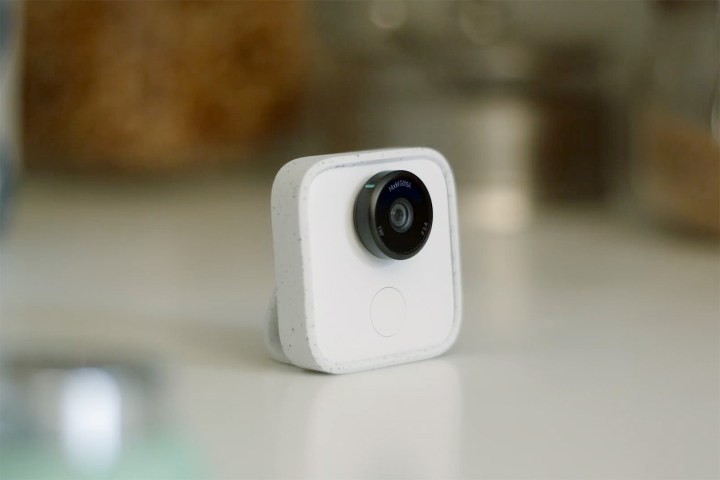If you were interested in technology around 2013 and 2014, lifelogging, or the practice of recording everything about your life for digital posterity, increased self-awareness, and potentially personal growth, was the big trend. The wide adoption of lifelogging seemed inevitable, at least based on the number of products and interest surrounding it, but it never really took off in the way lifelogging evangelists said it would.
Or did it?
Despite all the privacy concerns that eventually made lifelogging a dirty word, we have still all become lifeloggers — we just don’t call it that. Sadly, we may have lost out on the main redeeming feature about it in the process.
Lifelogging tech
Google Glass is perhaps the quintessential life-logging product. It was designed to be worn all the time and had a camera that could take stills and video, which it then uploaded directly to Google Now (remember that?) for all to see, and you to remember. You could feasibly catalog everything that happened in your daily life, and have it available on your own dedicated online diary immediately. We all know what happened to Google Glass.

Sony’s Core was a little different, but the idea was the same. A central control module fitted inside a wristband and worked as a simple fitness tracker, but it also had a button you pressed to “bookmark” key events during your day. Using your phone’s camera to take a photo, these two events were collated inside Sony’s Lifelog app, where you could add your own notes. When it was announced in 2014, Sony also showed off a tiny wearable camera concept product called the Xperia Eye to go along with the Core.
Then there were dozens of dedicated lifelogging cameras, from the Narrative Clip to the Memoto, and apps galore including Path, Journey, and Foursquare. Google returned to the lifelogging well in 2017 with the Clips wearable camera, which aimed to bypass the privacy problems that plagued Google Glass by only capturing short GIF-style clips, not recording audio, and not uploading anything to the internet automatically.

Almost none of these products and services survive today. The lifelogging envisaged by Google, Sony, and many others seemed to be a short-lived trend, killed by concerns over privacy and over-sharing. People dismissed it, migrated to vlogs on YouTube and Periscope, adopted a chosen social network, or just went with health-based quantified-self tracking. Lifelogging as a singular concept was done.
So much data
Until it popped up during a very recent meeting where a new fitness tracker was being introduced, I hadn’t heard the phrase “lifelogging” since around the time of Google Clips. Hardly any products or services are labeled as “lifelogging,” anymore, but it’s not because the trend or desire to track the minutiae of our lives has disappeared.
We do it every day with the photos and videos taken on our phones. Fitness trackers monitor our health and activity and link to platforms like Apple Health, Google Fit, and Huawei Health. Google Maps remembers our location and sends a monthly report of our movements, while Instagram, Twitter, and Facebook all provide our own online space to record any and every activity.

Smart home devices know how warm our houses are, when we switched the lights on, the level of humidity, and how long we sleep at night. Netflix, Disney+, YouTube, Apple News, Amazon, and most airlines know what we watch, read, or buy, and where we travel to. Emerging trends like Clubhouse share our voice, and vlogs share curated versions of someone’s life for all to voyeuristically enjoy. Even if you only use a handful of these tools, your personality will be reflected in the data.
Personal development through our data
Leaving aside the implications of the wealth of data we all hand over to various companies and platforms, it struck me that like many, I’m happily lifelogging away without really realizing it. The vast majority of my activities over the past years have been logged online to some extent, either with or without personal information being included and retained for at the very least a short period of time. Lifelogging had a point to it, and now we’re at a time when the sheer amount of data may reveal something about us we hadn’t considered before.

At its most basic, the point of lifelogging, or keeping any diary or journal of events, is to recall and enjoy those past events at a later date. However, there’s also the idea of using the data to better yourself. In this video made by lifelogging company Memoto, Quantified Self Labs’ program director Ernesto Ramirez says, “We have tools and devices that tell us what those numbers [related to what we have been doing, from watching TV to walking] really are, and exactly how we lived in the world. If we know those things we can have a clearer picture of who we are, and if we have a clearer picture of who we are, we can ask is that really the person I want to be?”
Yet because the concept of lifelogging promoted more than six years ago has been lost, all that pertinent data is spread across the internet, siloed, deleted, or hidden away in a long-forgotten platform, or simply not always immediately or conveniently available to us. Any usefulness it may have as a tool for encouraging personal growth is simply not there. Embracing lifelogging the way it was promoted in 2014 might have changed that.
What lifelogging could have been
Trying to bring all that information together is almost impossible today. Snippets can be gathered, but it’s only part of the story. I don’t have an expansive digital scrapbook, a single online space with everything I wanted to keep, because I didn’t or couldn’t make one. The concept of a personal digital repository for lifelogged data isn’t new. Bill Gates hinted at it in his book The Road Ahead in 1995, which eventually led to the Microsoft research project MyLifeBits, aka Total Recall.
The project, run by lifelogging luminaries Gordon Bell and Jim Gemmell, is a glimpse of what lifelogging could have been. Bell wanted to create a system where we could store and make use of the data we shared online, whatever it was. Although a central repository for all my data doesn’t sound like a good idea, or even that feasible anymore, the idea of being able to examine and possibly take advantage personally of everything shared and collected online over the years has considerable value.
There’s every chance that when collated and examined all this data wouldn’t tell me anything of use outside of being used for nostalgia, but on days of more significance, it may. The point is, I will probably never find out, yet I’m still putting in all the hard work generating that data.
Lifelogging the phrase may have effectively died out in 2015, but all the related activities evolved and have continued, only becoming more important to shaping who we are now and the environment around us. It’s unfortunate that I can’t view and learn from all this data, the creation and sharing of which was impossible to fathom a couple of decades ago, to perhaps influence who I will become. It seems lifelogging was, and still is, a trend, it’s just we haven’t benefited from it in the way we could have.
Editors' Recommendations
- Google needs to convince us WearOS isn’t dead (again)
- Google Assistant 2.0 isn’t just a minor evolution. It’s a game-changing upgrade




